Writing analog: A notebook lovestory
What do we want to leave behind in this digital world?
After dumbifying my phone1, buying a digital disposable camera (yes, that exists), and reducing my screen and scrolling time, I think I’ve reached a new level: I had the urge to write by hand again.
This urge isn’t completely new, but the force it has come with sure is. At the start of the pandemic, I used to journal every day and fill a notebook within 6 months. Somehow, a few years ago, I simply stopped. A lot was going on at the time: I got married, bought a house, renovated, moved, … reading crime novels to entertain myself was all I could manage. Journaling, writing, and thinking about life was simply not what my mind craved at that time.
Now that life has gotten steadier (the house is done), but my brain has gotten more restless (I am pregnant for the first time), the urge to journal and write by hand again has come back. But my brain seems to want more than to just journal. I want to learn more, read books that teach me something new, and (most importantly) I want to document my life and keep my memories and knowledge alive to pass them down later.
The ‘passing them down later’ part seems to be more important than ever. As someone who barely remembers anything from her childhood, with parents who remember next to nothing from that time either, all I have from my early days are some grainy pictures without context. And that is not what I want for my little one. I have no idea what my first word was, when I started to walk, or started to talk in full sentences. But I want my little one to know this, and I want to remember it too.
But the way I journal, which can be described as ‘stream of consciousness journaling’, is not something (or at least not the only thing) I want to pass down. My son doesn’t need to read my ramblings about my current lack of motivation or me brainstorming substack essay ideas. What I do want him to read about, however, is of our life together. Of all the adventures and fun things we will do together. All his firsts, the funny things he does that make my husband and me laugh so hard we pull a muscle. And I also want to leave something of me for when I am long gone, but he will still be here: what books I read and whether or not (and why) I loved them. Quotes that made me think, recipes, movies, restaurants we used to visit. Random knowledge I acquired that’ll show him that living means learning something new every day.
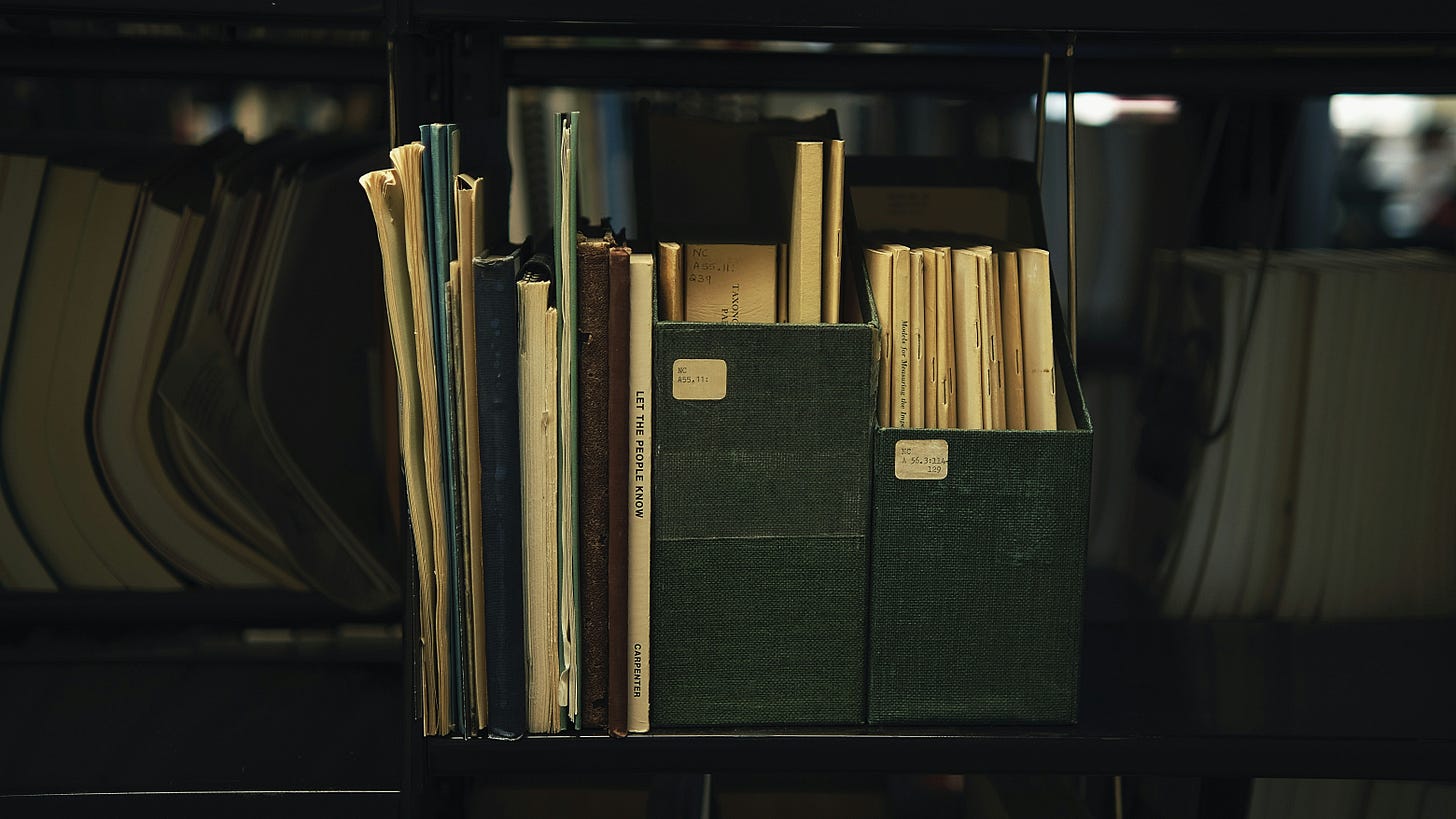
The initial idea to do this wasn’t mine, though. The idea to document more again, to have something to pass down to my kid, came from
and her newsletter on commonplace journaling. In this, she writes:I have been thinking a lot lately about how my 7-year-old daughter will remember me when I'm not around anymore, really wanting to leave her with a lasting impression of her mother living an inspired life. I know it's difficult and probably unadvisable to engineer memories, but she already has an awareness that I am a reader. What I want to be able to leave behind is an embodiment of my reading spirit. Our family book collection will be hers, of course, but I also love the idea of leaving her a stack of notebooks that contain quotes that challenged, moved, or entertained me. I want her to have a record of what made me feel alive.
I already have a ‘commonplace book’ (kind of), a place where I document all my quotes, recipes, interesting ideas, great shops and bookstores I found while traveling, the best restaurants and best dish, etc. — but I had it all in Google Keeps. Jotting something down while on the go has been a habit of mine forever. For years, I’ve collected these little snippets in my notes app. But how would I pass this down? How do we, in general, pass down our digital collections? Imagine centuries from now, what will archeologists discover about our life on earth? Data centers filled with curated posts — in essence, they’ll find nothing. It’s almost as if memories aren’t allowed to take up space anymore.
I decided to put all of that into an analog ‘commonplace book’ and create a ‘memory notebook’ specifically as a gift for my son when he is older. That was the starting point of it all, and after browsing and deciding on the best new notebooks for this purpose (listed below under ‘my notebook ecosystem’), I couldn’t stop thinking about all the ways I use notebooks today, and how I could use them for all the things I currently do on my phone or laptop. All of this spiraled into something so much more beautiful than I thought possible. Not only do I journal and take more physical notes than ever now, I also feel calmer and wiser than ever before. Like, writing my thoughts and knowledge down by hand is what my restless mind needed all along. Somehow, writing by hand and keeping the memories of myself alive for decades to come seems like the most natural thing a human could ever do.
The Research
But as it often happens when starting something new, it feels like too big a mountain to climb at first. Over the years, I’d collect notebooks and only use a few of them regularly. On my laptop and my phone, I would use different apps and places where I stored the very things I wanted to leave behind: essays, quotes, thoughts, or book reviews, etc. — it was a big chaotic mess, to say the least.
I did what I always do when I need to make sense of a new project like this: I research. This let me down the notebook ecosystem internet rabbit hole. Below is a selection of the best content I’ve come across during my research:
3 notebooks to save you from mindless scrolling by henrydidit: This made me realize how simple a system can be and that I already kind of have one without realizing.
let's start a Commonplace Book! 📖 journaling for writers by Christy Anne Jones: Love the idea of a writer’s sketchbook.
How to Start a Commonplace Book (and Why You Need One) by
: She included a list of ideas on what to include when you first start a commonplace book, which really helped me make sense of all my digital collections and in what type of notebook they would fit best.my commonplace notebook system by Jazzlypuff: A really good breakdown of what a commonplace book is and what it can do. For me, this is a bit too organized, but loved watching how unique a commonplace book can be.
5 Things I Learned from Journaling for 30+ years by
: More about journaling itself but a great reminder of why journaling has been this kind of constant in my life.How to Keep a Commonplace Book (And Why You Should) by
: This is more about reading comprehension and reading deeper, something I want to get better at and do more of. This kickstarted my book journal, and I’ve been loving it so far.fixing my attention span ✧ ep. 2: DIY-ing the louise carmen notebook by Carolyn Lok: Once the algorithms realized that I am interested in journals, I kept seeing these leather portfolios from Louise Carmen and Paper Republic and immediately fell in love. But I simply couldn’t justify spending over 200€. So, I made one by myself, roughly following Carolyn’s tutorial.
My Notebook Ecosystem
When I started collecting all the notebooks I use regularly, I noticed two things:
I always had a notebook ecosystem, albeit a bit of a chaotic one.
I realized why bullet journaling never worked for me.
As a true stationery enthusiast, I collect notebooks left and right, use some of them regularly, and store the others, with the hopes of one day using them for this really great idea that I undoubtedly will have, when instead most became dusty remnants of that early enthusiasm. But the notebooks I did use regularly all served a different purpose, and over time, I’d created this notebook ecosystem that I didn’t know I had.
But what exactly is a notebook ecosystem?
A notebook ecosystem is a set of notebooks, each with a distinct purpose, that work together to support a person’s thinking, creativity, and organization. It's a system where individual notebooks play different roles but function as parts of a coherent whole.
In short: A notebook ecosystem helps me make sense of the world I live in, nurtures my creativity, relaxes my mind, and gets me through my day-to-day.
This is also why bullet journaling never worked for me. It felt too chaotic to have all of the different intentions and purposes of notekeeping in one notebook; it felt cramped and forced. Creating this overview of all of the notebooks made me realize that each of them serves a specific mental purpose:
to create structure
to stay calm
to remember
to learn
Below, I am guiding you through these four sections and the notebooks within them. The list is long, but I love it and it really does work for me. Every time I grab my leather portfolio or my gardening notebook, I feel this immense sense of giddiness and calm.
It probably is too much for most and has gotten a bit out of control over time, but maybe you’ll find some ideas along the way on how you can create or enhance your notebook ecosystem that fulfills your own unique needs.
To Create Structure
Weekly planner
A classic weekly calendar to help me plan my day-to-day and remind me of appointments, birthdays, and trash days. This, however, is also the only ‘notebook’ that kind of exists digitally as well. I use a mix of Google Calendar and this planner to organize myself. I find it easier to add a new appointment on my phone while on the go than to take out my paper planner and write it down. But I also noticed how I tend to forget things when I add them weeks in advance. So I usually have a 2-step method for this:
Add all the necessary appointments and tasks to my Google Calendar
At the beginning of each week, I go through my Google Calendar and copy everything over to my paper planner.
This actually helps me remember what is happening within each week, and writing everything down allows me to see how much I have on my plate, often leading me to move some tasks around to spread them evenly across the week.
Notebook used: Unknown brand. I got it on sale at the dollar store (and I hate it). I am currently on the hunt for a new one (thinking about getting an academic planner that starts in August/September to finally get rid of this horrible one). It was a bit of a desperate buy as I really needed a new one (it was mid-December at that point), but didn’t have time to go to the ‘big city’ and really didn’t want to place an online order for one simple planner. The dollar store was the only place that had somewhat respectable, weekly planners that aren’t unnecessarily chunky. If you have any recommendations for a vertical(!) weekly planner in either B6 or an A5 slim that isn’t unnecessarily chunky (I don’t need a monthly overview and want to insert it into my leather portfolio), please send them my way!
Braindump notebook
Some would also call this a ‘catch-all’ notebook, and that is exactly what I use it for. Whenever I need to write something down, it goes in here. To-do lists, notes while doing my taxes, floor plans, packing lists, etc.
Instead of having loose papers lying around everywhere, all of it is in one place. And sometimes they are actually helpful well after I’ve written them down, e.g. my tax notes from last year helped me with this year’s taxes.
Notebook used: Muji, Recycling Paper Double Ring Notebook B5
Gardening book
When we bought our house, I was quite overwhelmed with all the gardening knowledge I had to learn. Growing up in an apartment, it was not something that I ever had to think about, and it all felt like this huge set of knowledge that I had to catch up on. At first, I used to add gardening notes into my braindump notebook, but it got overwhelming quickly, and I also felt I needed a reference to come back to regularly.
So I created a designated gardening book that includes monthly to-dos, a list of all the plants I bought and from where, a blooming chart by month (I love the idea of something blooming in the garden at all times), the products I own and need to repurchase, shops I like, ideas for the future, gardening events that are coming up, measurements of my garden (you need that more often than you think), and gardening knowledge I acquired from books and articles.
This has helped me tremendously (especially the monthly to-dos), and my garden does look quite pretty now, if I dare say so. This is very much a living notebook where I’ll add things and knowledge along the way. I do hope to keep up with this for a really long time.
Notebook used: Leuchtturm1917 B6+ Hardcover Notebook, dotted, in Fox Red
To Stay Calm
Journal
Next to my weekly planner, this is by far my most used notebook. I journal almost every day and simply write what’s on my mind. You could call this ‘stream of consciousness journaling’, where I write down whatever thoughts I need to sort out. Lately, my journaling has evolved a bit more towards memory keeping as well, where I write about my actual activities and not just about my feelings. Sometimes I even use it to brainstorm ideas for essays or another creative project that is on my mind.
I don’t stress too much about what my journal looks or sounds like, as long as it helps me sort my thoughts and allows me to calm down. I let my journaling practice evolve alongside me.
Notebook used: Moleskine Large Classic Hardcover Notebook, in Myrtle Green
To Remember
Memory notebook
My childhood is a big gaping hole, and I remember almost nothing from that time. When I got pregnant, I was terrified of forgetting too much from pregnancy and my son’s early childhood days. I wanted to keep a record of it somehow, and pictures weren’t going to cut it. I have tons of picture albums from my childhood, but no one remembers the context in which the pictures were taken. They say a picture says more than a thousand words, but I’d argue that a thousand words can say so much more than a picture ever could.
At first, I thought it was something I only wanted to do for my little one, to collect all the memories and share with him later. And I will do exactly that, but through writing about our time together, I noticed how all of this is as much for myself as it is for him. A collection of shared memories, a book full of shared love to last both of our lives.
I have no idea what this book will turn into along the way, but I started by writing a letter to him, explaining what this book is about. It then goes through the milestones of pregnancy, when I felt his little kicks for the first time, or how we came up with his name. After that, I could imagine it will follow a similar structure of funny memories in chronological order. Here and there, I put a picture on the page as well, for good measure, but the majority is handwritten letters and journal entries from me to him.
To Learn
Commonplace book
The definition of a commonplace book varies, but to me, it is a personal compilation of knowledge, ideas, quotes, and observations for future reference and reflection. I use a small notebook where I collect quotes I found that stuck with me for some reason. I also added my go-to recipes, favorite restaurants, or interesting bits of knowledge I learned somewhere. All in all, it is my notes app in a physical, analog notebook.
The one thing that makes it different is the index, the most important part of any commonplace book, in my opinion. At the end of the book, I have listed the alphabet and left some space for each letter. With each entry, I assign a broad category to it, write it down under the corresponding letter, and add the page number (I shamelessly used the same system as Petya, thank you).
I love how different themes emerge and that I actually revisit my entries long after adding them — something I never used to do with things that went into my notes app. Quite frankly, most of the things I store digitally are never looked at again. A sad reality of our time, I guess.
Notebook used: Moleskine Pocket Classic Hardcover Notebook, in Scarlet Red
Book Notes
This is the newest addition to my ecosystem. Since leaving University, I noticed how my knowledge retention has declined significantly. Something that happens to many of us, I am sure, but not something I am particularly proud of. When we had a general election earlier this year and I started to read up on all the parties and their plans, I noticed how little of the knowledge I gathered stayed with me beyond election day. That realization made me want to learn more and read better. It led me to buy essay collections and to read more non-fiction books. But still, I felt just reading wasn’t enough anymore. Through my research into commonplace books, I noticed how many people use them for reflection as well. One video I particularly liked is this one from Jared Henderson. He simply writes down quotes from the things he reads and summarizes his thoughts and reflections into a notebook. I love how simple this is and how learning something new doesn’t have to be this big endeavour every time. It can just be a quote and a thought — that’s it.
I wanted to do something similar with the books I read and started a book journal. This, accidentally, fixed a problem I wasn’t able to solve until that point: how to clean up all my book notes in my notes app. They didn’t seem to fit into any other notebook I was using, so I left them where they were, not wanting to force something into submission that I would soon abandon anyway. The wish to write more about my reading, combined with TBR lists, upcoming releases, and a list of my favorite authors, ended up becoming this book journal.
I love how it incorporates everything I love about Goodreads, but allows me to add whatever I want. For example, I have a hard time remembering names, so I kept a list in my notes app with the names of all my favorite authors. But that list never linked back to any of their work or my thoughts on them. Here, all of that information is combined.
Notebook used: Dotted A5 Notebook from Amazon
The Beauty of Notekeeping
The journal is a vehicle for my sense of selfhood. It represents me as emotionally and spiritually independent. Therefore (alas) it does not simply record my actual, daily life but rather — in many cases — offers an alternative to it.
Susan Sontag
If I had to choose the most impactful notebooks in this collection, it would be my journal, the book notes, and the commonplace book. All three of them are, what Susan Sontag describes above, the “vehicle for my sense of selfhood”. They’ve transformed me into a calmer, wiser, more knowledgeable person. They’ve also made me see and explore the world a little bit differently now:
Through my book notes, I noticed how I lean more towards literary fiction these days, a genre I haven’t read much of yet. But after marking several of the books with a ‘new favorite author’ heart next to it, I noticed that this is probably a genre worth exploring.
Many quotes in my commonplace book are about life and parenthood these days, but from a philosophical standpoint. It made me venture into philosophy for the first time, something I probably would’ve never done without writing all of these quotes down.
It just shows how writing things down and actually thinking about them can show you sides of yourself you never knew existed. Simply saving something in a notes app doesn’t have the same effect — you save and forget about it before it can even make an impact.
How-To: DIY Leather Portfolio
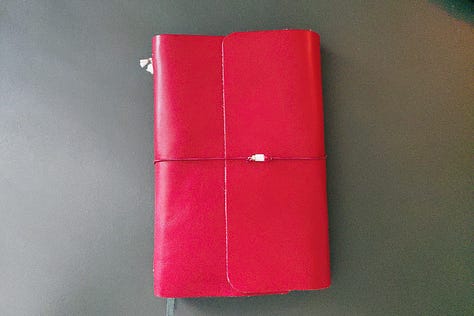
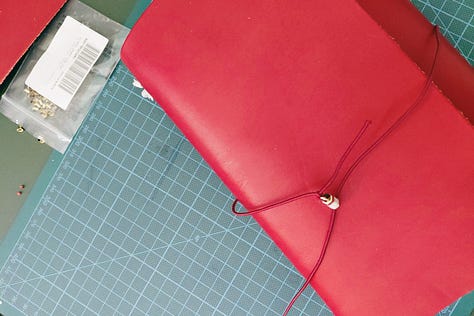
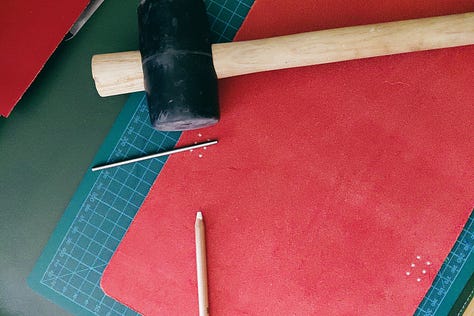
Spending over 200€ on a leather portfolio seemed way too extravagant during a time when I also have to buy a car seat and a stroller (why are they sooo expensive?!). But I quickly realized that the materials needed would cost way less, so I decided to simply make my own.
Important Materials
Leather: I bought this leather from Leatherbox. Generally I recommend a thickness of 1.4 - 1.6mm.
Elastic cord: There are plenty of options online. I bought this in 1.5mm thickness.
Eylets (incl. tools): Finding eyelets this small (max. 2mm) and the needed tools was a bit of a challenge.
Accessories
Pen loop: This seemed like the best option at the time. I am not 100% sold on it yet and would love a magnetic pen loop made out of leather (but that is beyond budget right now).
Sticky card holder: I wanted a place to store sticky notes and such. This set was the best option for me. I simply cut them into whatever size or shape I need.
Charms: Absolutely not necessary, but it makes the entire portfolio look stunning. I bought my charms from this Etsy seller.
In total, this came down to 76.42€.
I forgot to take pictures of each step while working, but if you watch Carolyn’s video, you will know exactly what to do. The template she linked in her description is useful, but I made my own in the end to make sure that it truly fits an A5-size notebook and allows for 2-3 hardcover books. Right now I have my journal and my book notes in there, but I also want to add my weekly planner to it (once I find a new one), as these three notebooks are the ones I use the most, if not every day. They are also the notebooks I would take with me while traveling.
XOXO
Annika
What I did:
Turned on greyscale
Deleted all social media apps and only use them on my computer or tablet now
Minimized my homescreen by only having the most important apps on there (WhatsApp, my local train app, Google Maps, etc.)



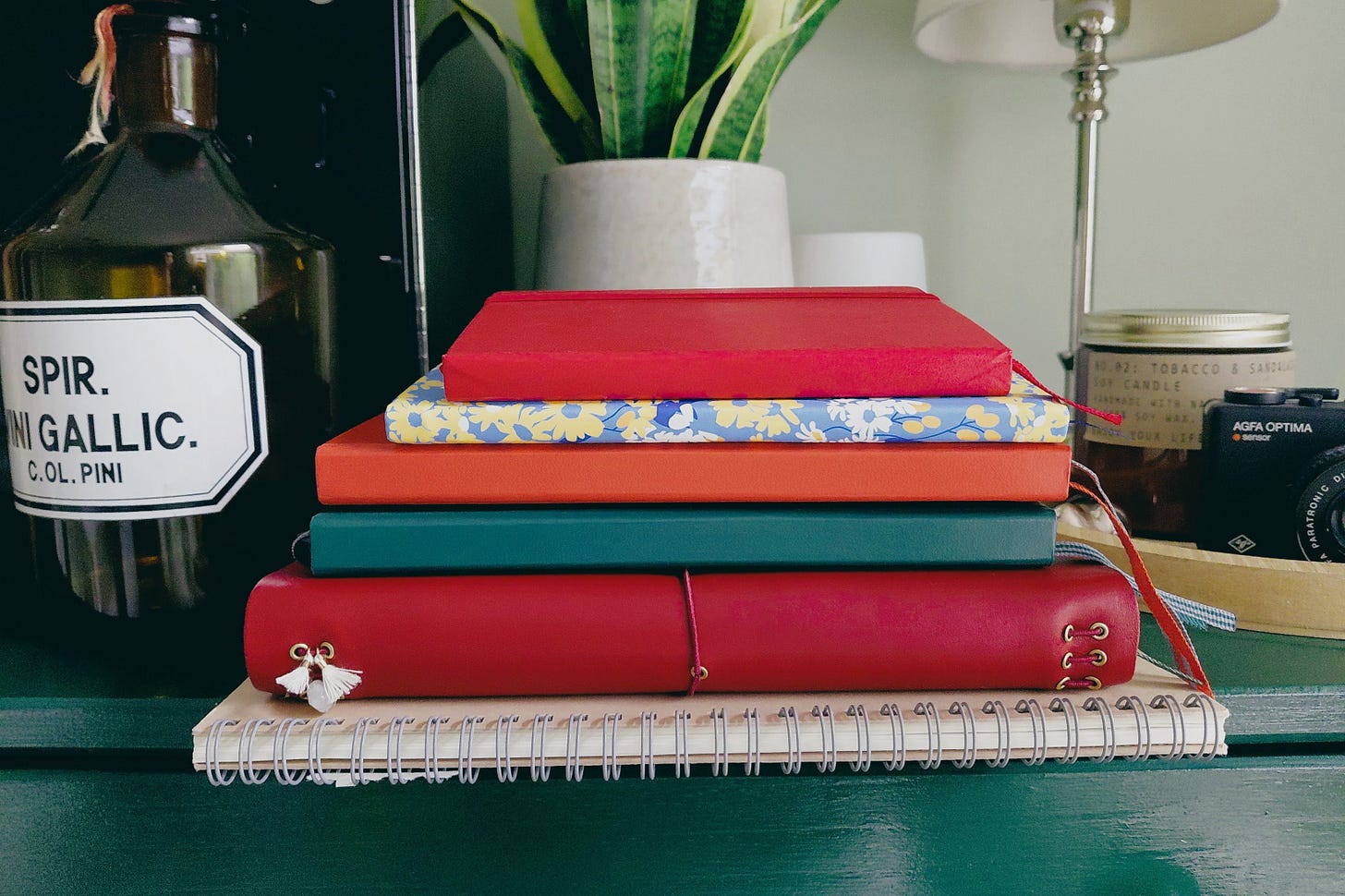

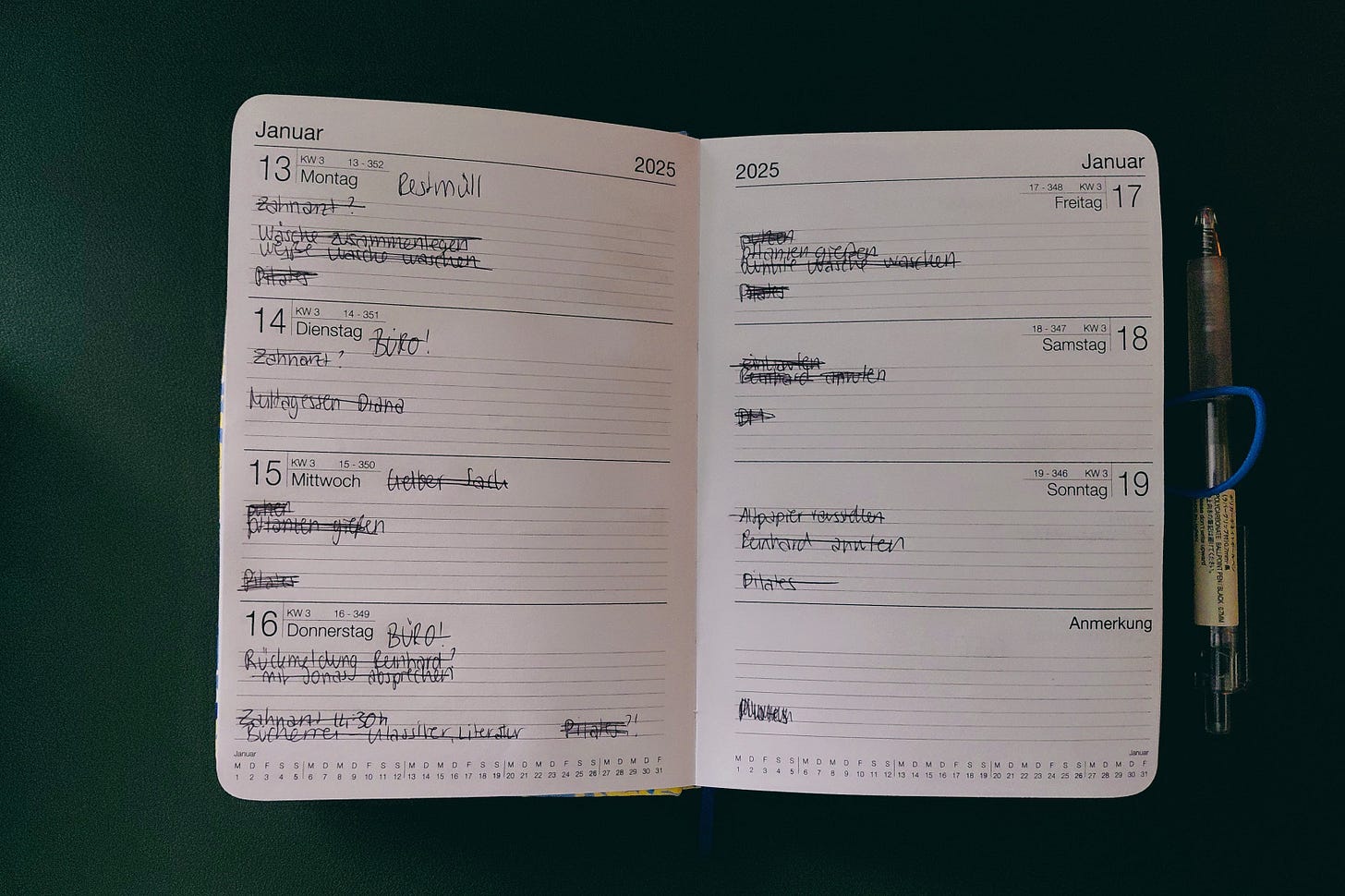


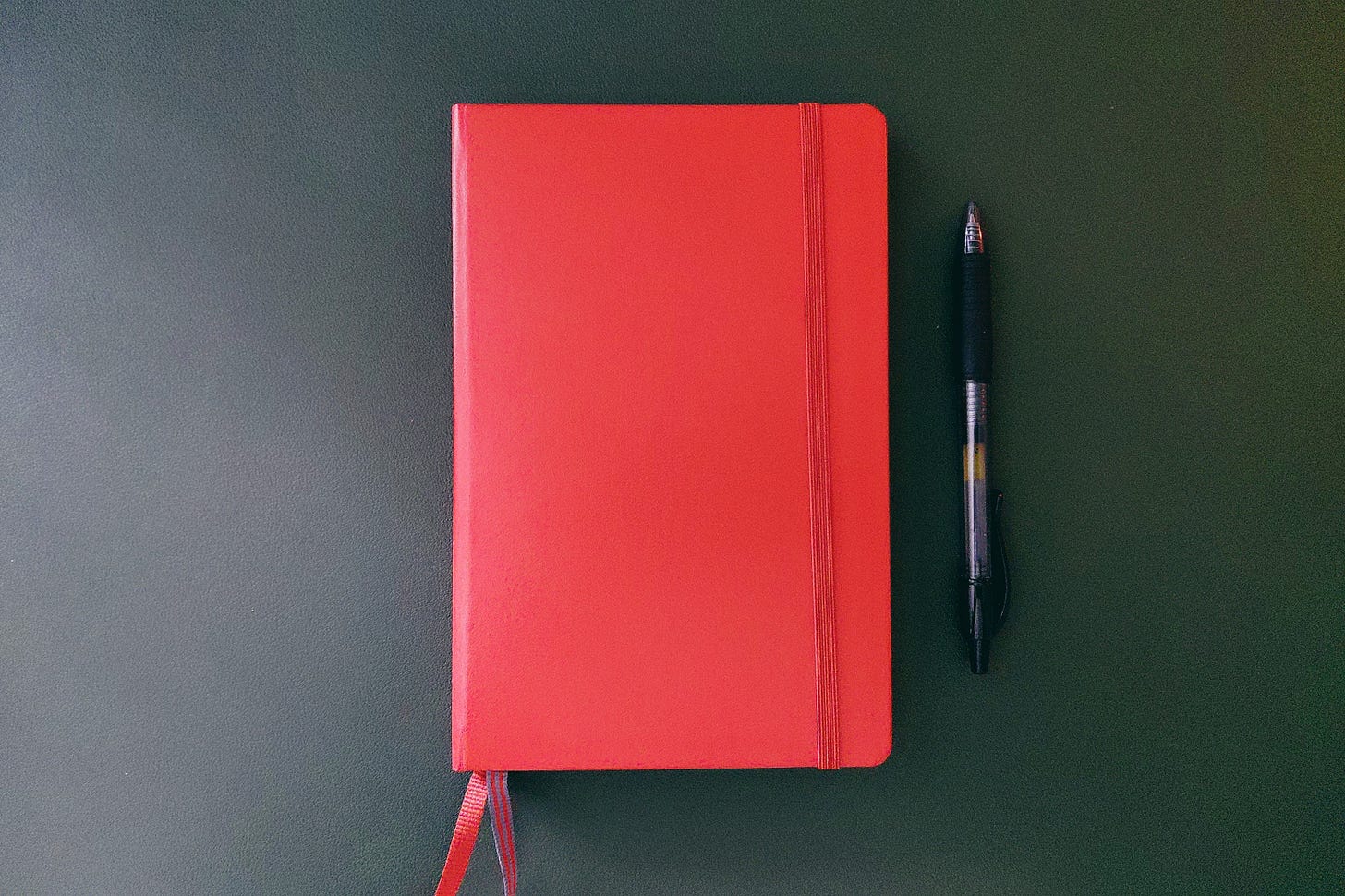
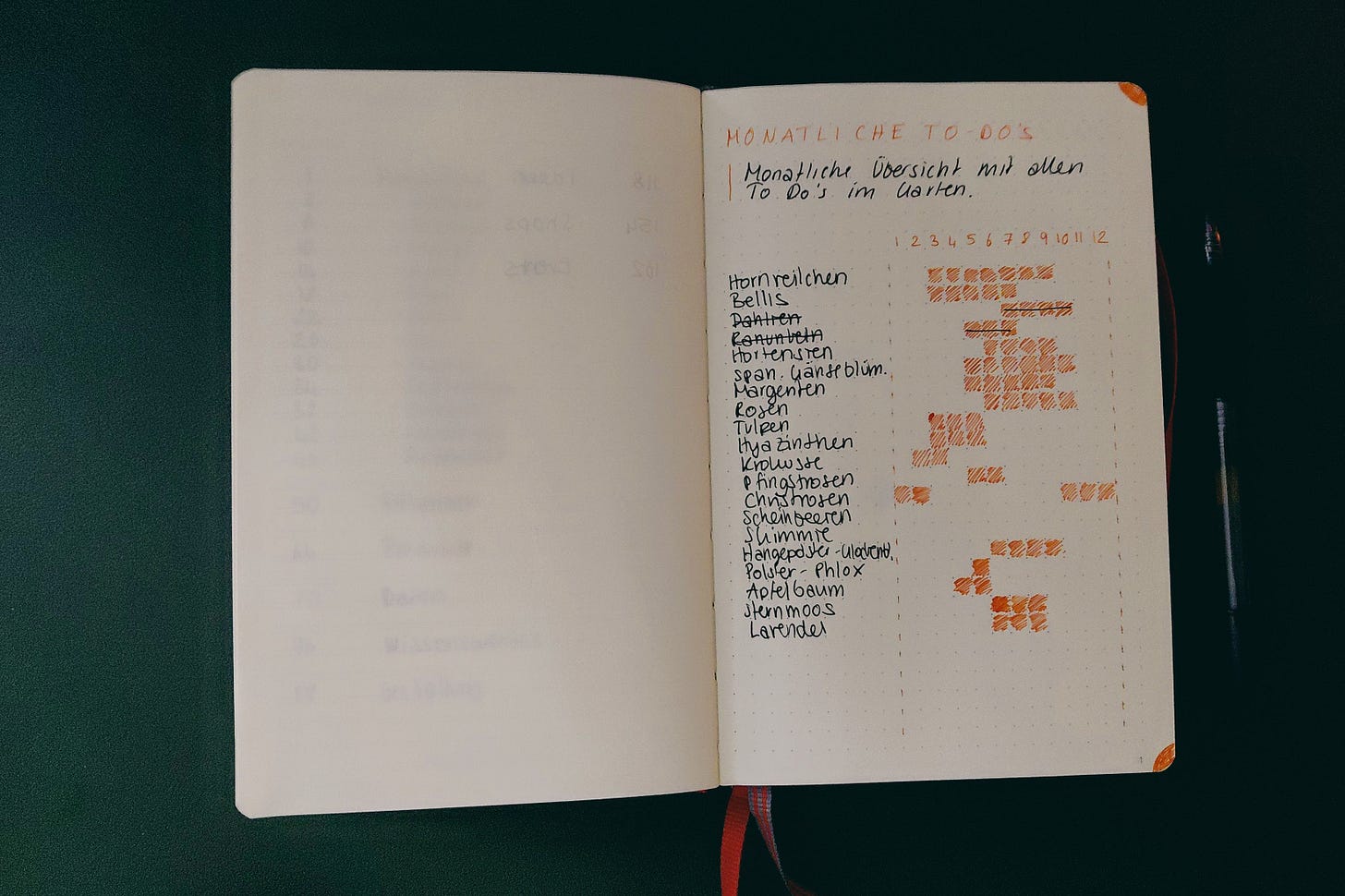
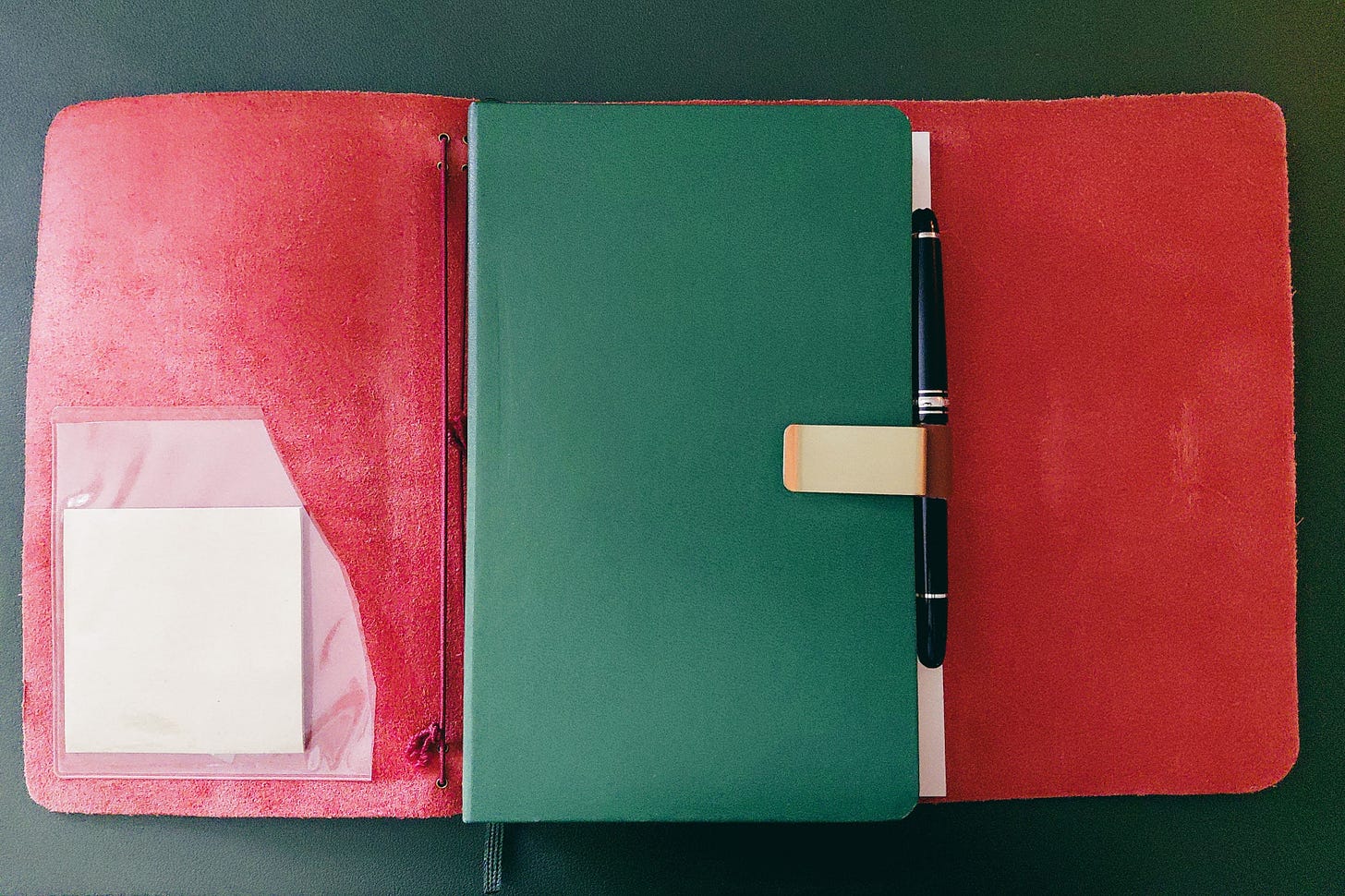

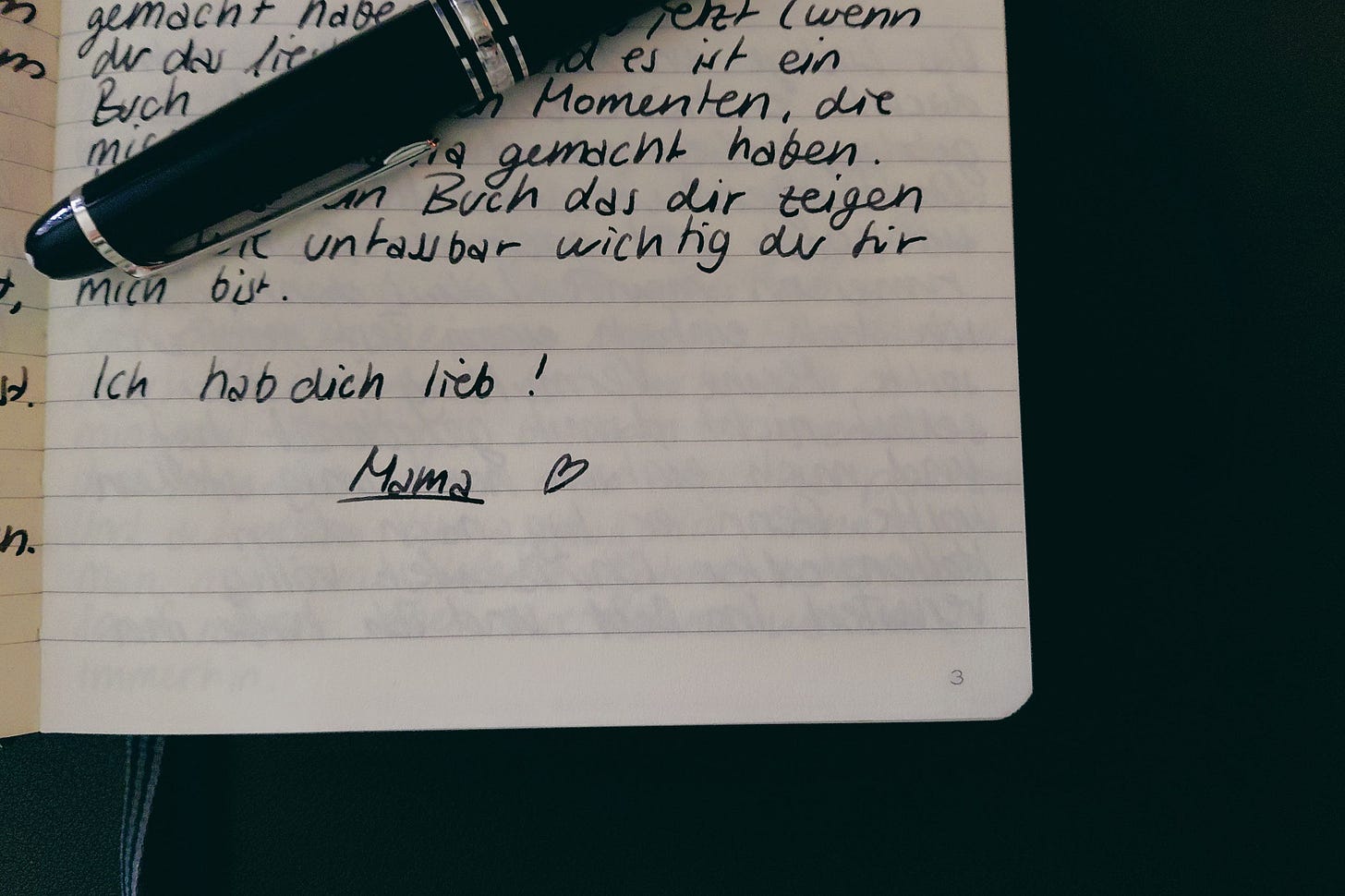
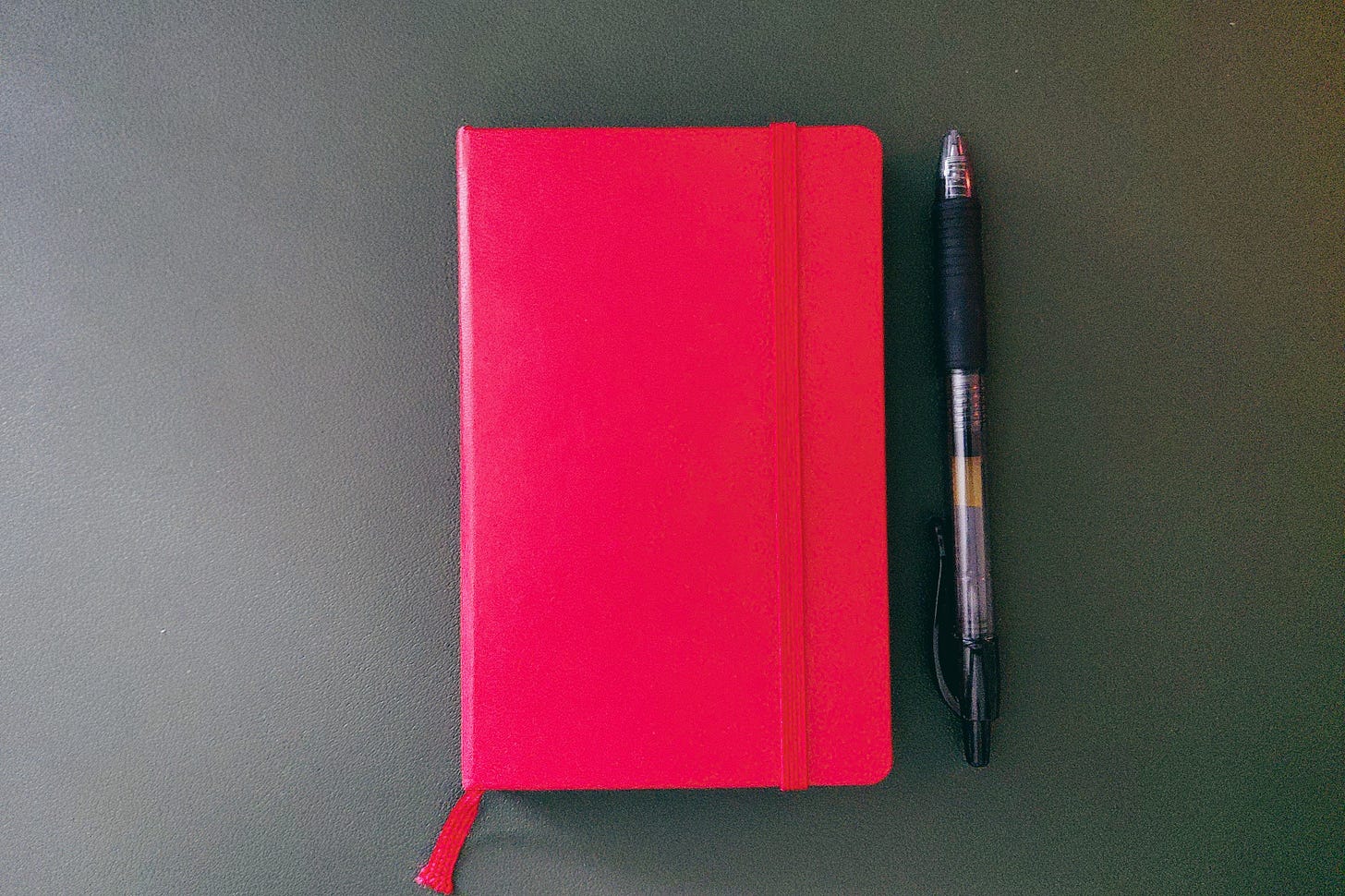

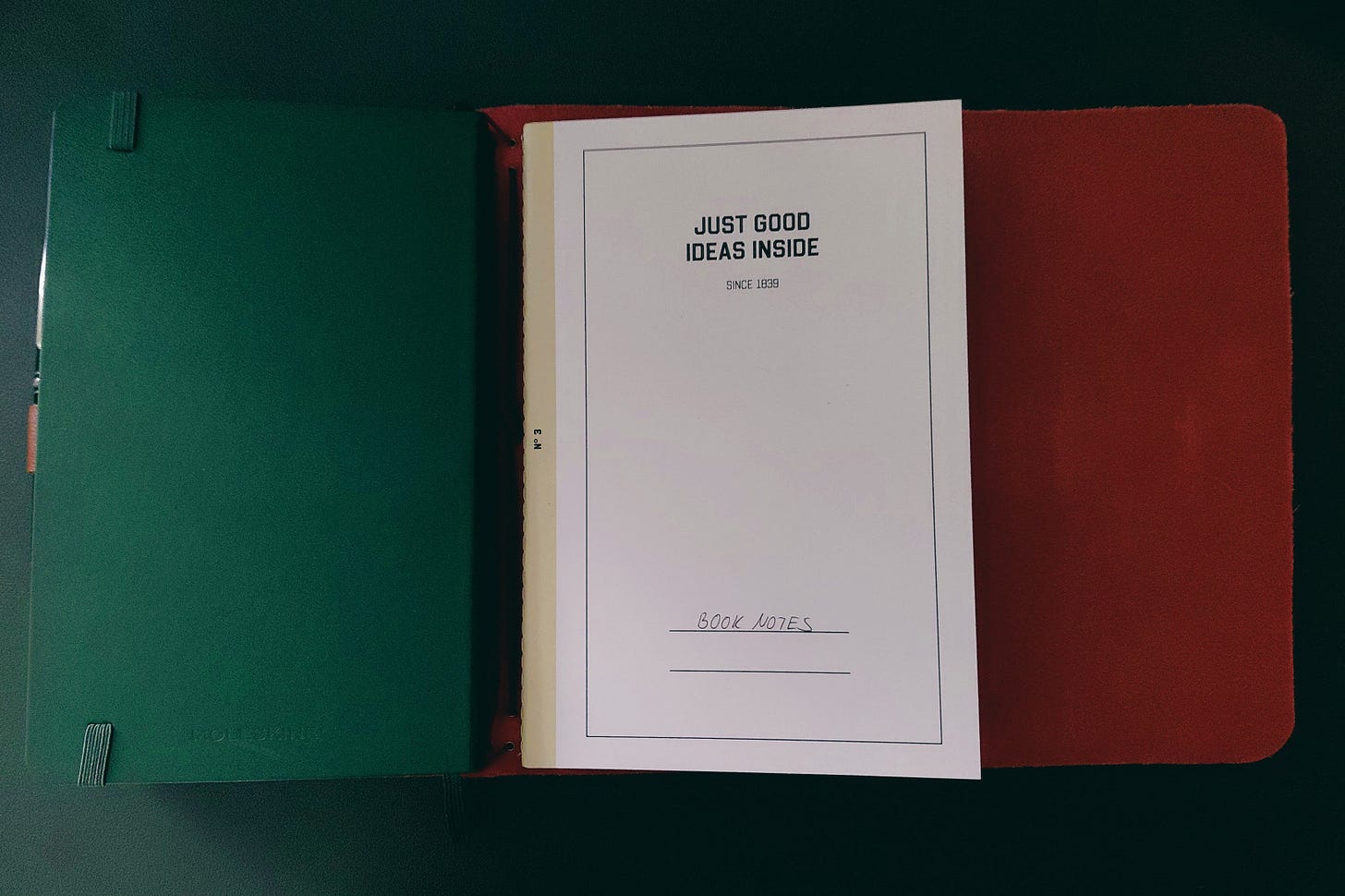

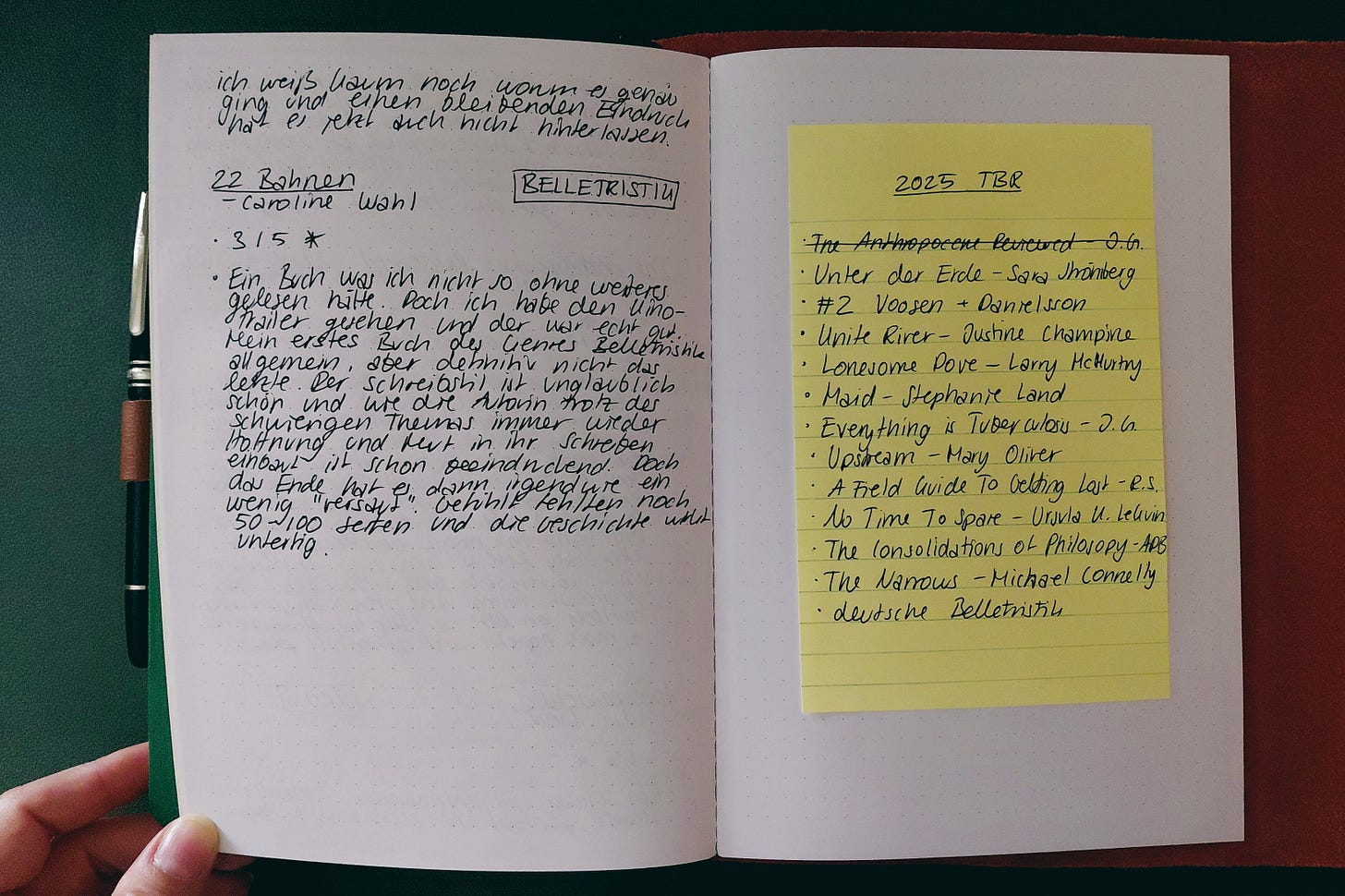
"How do we, in general, pass down our digital collections?" this is such a great question!! !! future generations won't have mixtapes, vinyl collections, shelves of CDs and movies to enjoy... heck, they will barely have to deal with old books! Most millennials have left them back in their childhood bedrooms and there's nothing to 'pass on'!
What a wonderful resource, and a lovely surprise to see that my post on outcomes from a lifetime of journaling reached you! I’ve been working out a “notebook ecosystem” as well — have tried all kinds of digital things, but they don’t seem to have staying power. Thank you for sharing what’s working for you!